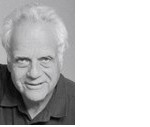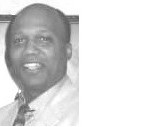
 After years of suffering and resignation about disrespect and mistreatment at the hands of local police, young and older African-American residents of inner city west and east Baltimore, joined by others, came together these past two weeks to say: “we’ve had enough.” The spark for this was the fatal injuring, while in police custody on 12 April, of 25 year old Freddie Gray, who died a week later on 19 April. Gray was a resident of the Sandtown-Winchester neighborhood and also a childhood victim of lead paint poisoning. He was arrested for making eye contact with a policeman and then trying to run away. His death acted as the proverbial straw that broke the camel’s back.
After years of suffering and resignation about disrespect and mistreatment at the hands of local police, young and older African-American residents of inner city west and east Baltimore, joined by others, came together these past two weeks to say: “we’ve had enough.” The spark for this was the fatal injuring, while in police custody on 12 April, of 25 year old Freddie Gray, who died a week later on 19 April. Gray was a resident of the Sandtown-Winchester neighborhood and also a childhood victim of lead paint poisoning. He was arrested for making eye contact with a policeman and then trying to run away. His death acted as the proverbial straw that broke the camel’s back.
In Baltimore over the past week, around 200 businesses were damaged. There were 144 car fires and 15 building fires. Some police cars were damaged. Because thirteen pharmacies were burned or looted, the Baltimore City Health Department set up a system for helping customers get their prescriptions filled. 130 police officers were injured, usually from thrown debris. 486 persons were arrested, and in many cases, held without charges being filed against them. An evening curfew was put into place for five days. This destruction has played itself out now and stopped.
On the other hand, there were several entirely peaceful protest marches and large public gatherings throughout the week, resulting in no violence whatsoever to person or property. Many persons from different areas of the city volunteered to help clean up after the looting. Fortunately, the Baltimore City States Attorney took swift action on 1 May to charge all six police officers implicated in the death of Freddie Gray. The ten day state of emergency put in place by the Governor of Maryland ended on 6 May, with the full withdrawal of 3,000 National Guard troops and 1,000 additional police officers. On the same day, the Baltimore City Mayor requested a civil rights investigation by the US Department of Justices into the “patterns and practices” of the Baltimore City Police Department.
Three lessons have emerged from these events and can serve as wake-up calls to Baltimore and other cities around the US:
Lesson #1—The public’s health includes being free not only from the threat of gun violence, but also from the violence suffered at the hands of police officers and other government agencies. This violence can take the form of active assault and injury, but also can include inhumane treatment through callous indifference to and neglect of the human needs of neighborhood residents. This is as much a matter of class and social status as it is of race.
Lesson #2—A long history in Baltimore and elsewhere of police disrespect and abuse of authority eventually can become intolerable and lead to explosions of public outrage, some of which may include violence against property or persons. The relentless, massive “war on drugs” is largely responsible for this police abuse. America’s longstanding decision to criminalize the abuse of drugs has virtually eliminated the practice of requiring “probable cause” for arrests, and has led to thousands of lives damaged and wasted by wholesale warehousing in jails and prisons.
Lesson #3—This specific public outrage about police misconduct is fueled by a broader and deeper public outrage at the severe economic, social, and health disparities which have persisted for many years within some Baltimore City neighborhoods. People living in these areas feel that they are invisible to an indifferent and resistant larger society living both within the City limits and the counties surrounding Baltimore. This outrage is saying: “Since you do not seem to hear us, we will speak louder in order to get your attention.”
This public outrage cries out for substantial, innovative, and lasting programs to reduce and eliminate these disparities, planned in large part with the active, ongoing participation by all residents, but especially by residents of the most deprived neighborhoods. This will require special efforts and incentives to include residents of all ages from these neighborhoods. Deadlines should be set for results, and the program planning should be carried out in natural phases. They could begin immediately with systematically-conducted neighborhood listening sessions throughout the city and also in the metropolitan area’s two counties which border on the city (Anne Arundel and Baltimore Counties). For example, in phase 1, local neighborhood residents could name and define their problems. Phase 2 could call upon local residents to prioritize these problems. Phase 3 could then explore and decide upon ways to work to address these problems systematically.
At the heart of such programs should be the social determinants of health: good schooling, possibilities for skills training, gainful employment, elimination of vacant housing, proper nutrition and access to healthy food, much better public transportation, and much more frequent diversion of persons from current and previous imprisonment to economically rewarding alternatives. The seeds for such programs already exist in some neighborhoods around Baltimore, but they need to be scaled up and greatly added to in order to have a sufficient impact to reduce the disparities. We are talking here about an effort which will require a minimum of five years to launch.
Work on these programs must begin immediately and will require redeployment and re-commitment of local, state, and federal resources—from both the public and private sectors. If this effort is not just to be another band aid offering a temporary patch to deep economic, social, and health inequities, then the effort must be highly public and transparent, sustained by a broad consensus that this is the way to move to bring lasting improvement and justice to the people of our City and Metropolitan Area.
Art Cohen is an advocate for local public transportation, with a background in public health. He has worked with Baltimore City community problems over a period of almost fifty years, starting out in 1967 as a legal aid lawyer in inner city East Baltimore.
Selwyn I. Ray a native of Baltimore, has been involved with youth mentoring and numerous efforts regarding system change, violence reduction and health promotion for youth and families during the past thirty-five years.
Competing interests: None declared.
